I’d like to open with this shot of a Canada Goose flying above the surface of Scott’s Creek in Portsmouth, VA. Talk about a species that is an awesome photo target. To me, this is a quintessential fall photo. Canada Geese are considered “harbingers of the changing seasons.” This is also a quintessential goose photo. Canada Geese seem to favor flying just above waterways. Notice that the bird is banking and about to change direction.
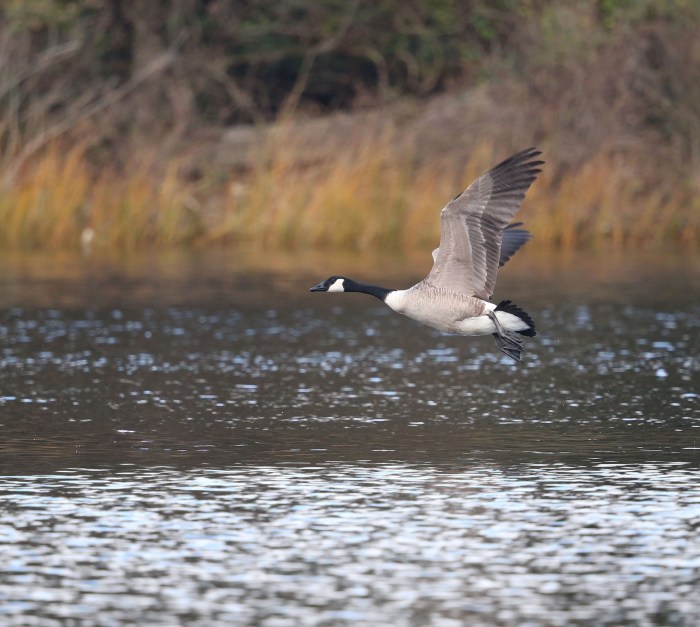
All God’s Critters
Keeping with the theme that all God’s critters (including European Starlings) have a place in the choir, here are 2 birds that are busy practicing. First is a Carolina Wren.
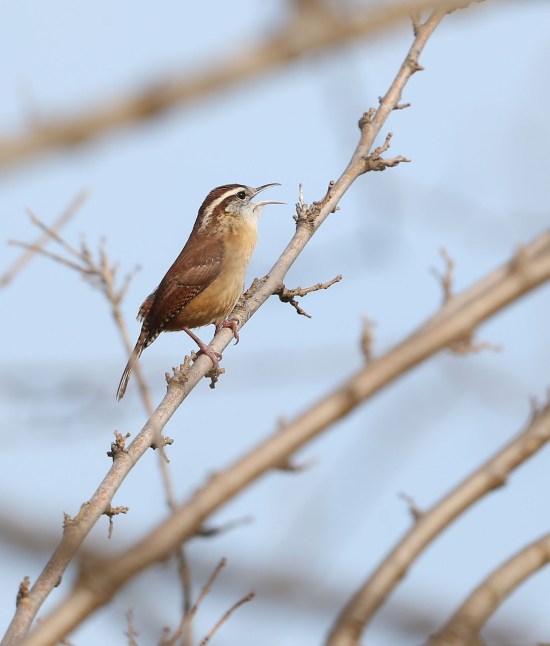
Next is a Double-crested Cormorant.

You might be able to tell which is the soprano and which is the baritone. In any event, here’s a 3rd—also a baritone—heading for home after practice. It was getting late.

A New Axiom
It’s interesting. Whenever I write about European Starlings, House Sparrows, or even Canada Geese in a favorable way (handsome, objects of study, accessible photo targets, gateways to learning, spiritual messengers, a child’s first bird), it’s a little like writing about politics or religion. Some folks get rankled. It makes me wonder whether or not we should replace “civilized people never discuss politics or religion” with “civilized people never discuss politics, religion, or starlings or their ilk.”
Cormorant Feet
Did you notice the cormorant’s webbed toes in the second photo (or were you more focused on its sizeable gape)? Here’s a close-up from another photo (but in harsh late-morning light). I generally avoid shooting in light like this and vastly prefer the golden hour light of early morning/early evening.

The toes—all 4 webbed, making them look and function like big flippers—enable these birds to be powerful and remarkably agile underwater swimmers. They’re especially fun to watch as they go after fish beneath the surface. They’re also fun to watch as they display interesting behaviors above the surface
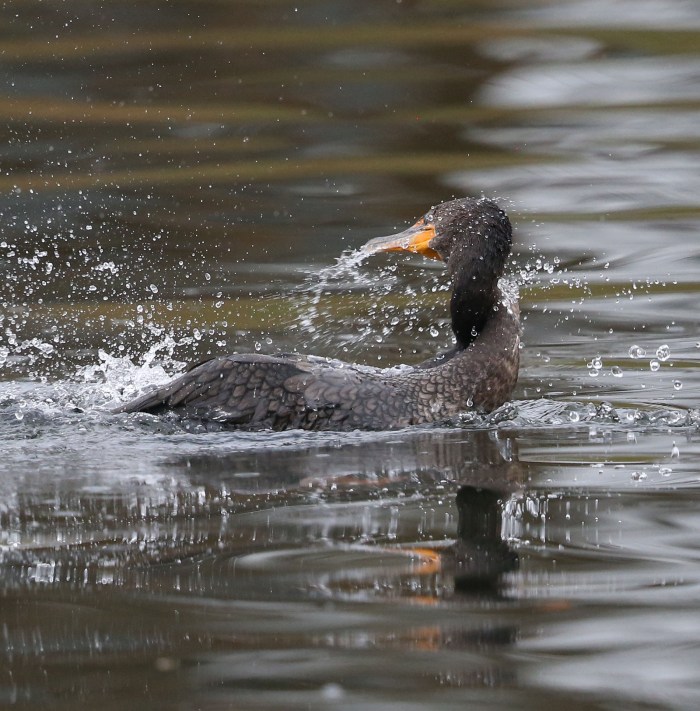
or nonchalantly swim across the surface.
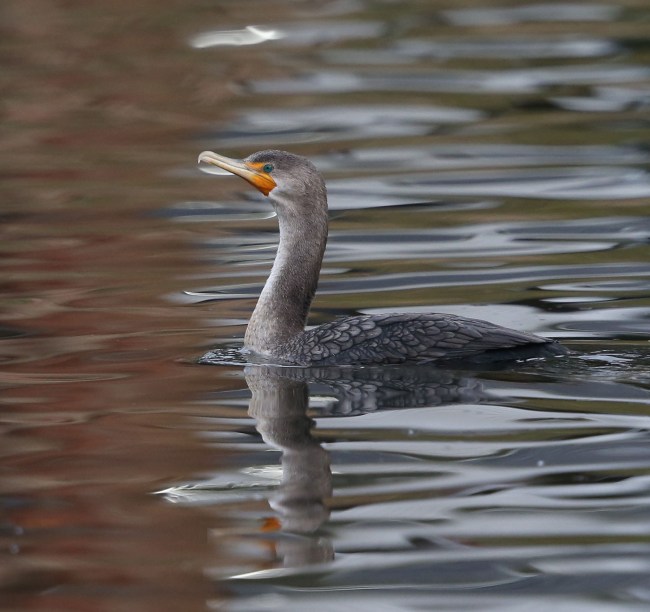
Brown Pelicans
It’s interesting that Brown Pelicans, also water birds—albeit larger and more coastal ones—have the same kind of toe arrangement and webbing. They’re strong swimmers, too, but they do most of their foraging by plunge-diving from the air, not swimming beneath the surface. They also forage while sitting on the surface.
This young bird is heading toward a piling. Pelicans and cormorants also share a fondness for pilings.
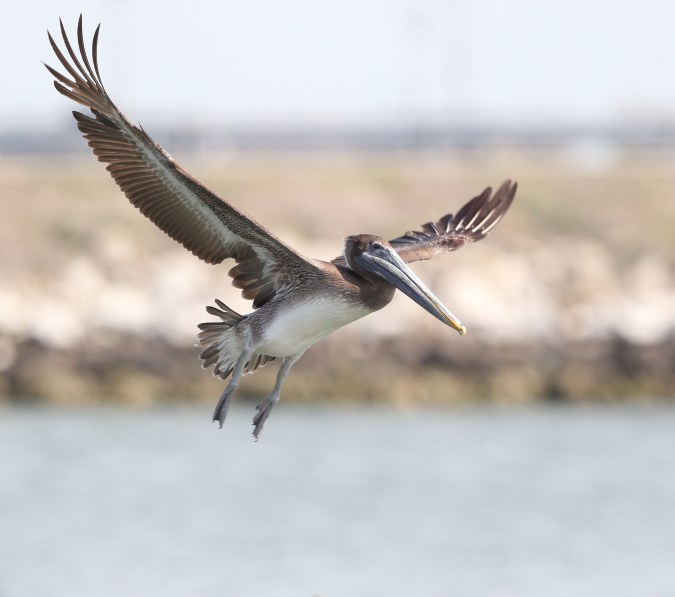
Crow Antics
Several readers commented on the Fish Crow close-up in “All God’s Critters.” Here’s another photo of the same bird. I took both during the 2020 breeding season, and both are Elizabeth River Park (a Chesapeake, VA city park) photos. For that matter, all the other photos, except the one of the goose, are city park photos. Don’t neglect those city parks! Here, the crow, which looks like it had gotten into a can of Zinsser primer, appears to be looking for nesting material. It was unsuccessful in its attempt, but boy did it try.
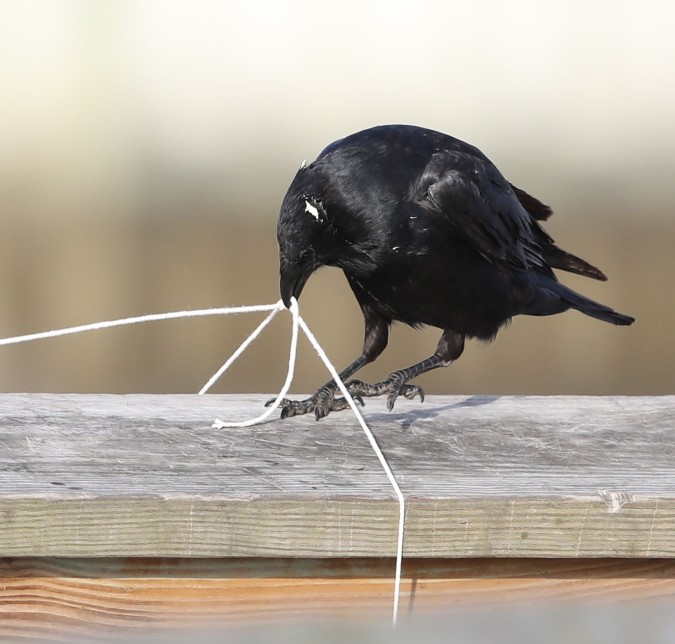
And This Just In
I hope the folks at Rust-Oleum, makers of Zinsser primer, appreciate the backlink!
This a disclaimer. WordPress.com hosts this blog, and I’m a big fan. But for some reason the images I upload here are softer than my originals. This is a problem I’m working with WordPress to resolve. All the same, I hope you enjoy the photos. I take great pride in them and in sharing them with you.
Since publishing “All God’s Critters,” I’ve received some interesting comments but also some touching stories about European Starlings. One of the stories, the moral of which is “don’t disrespect starlings,” blew me away. I’ll share that and some of the rest with you in the next blog, so please stay tuned.
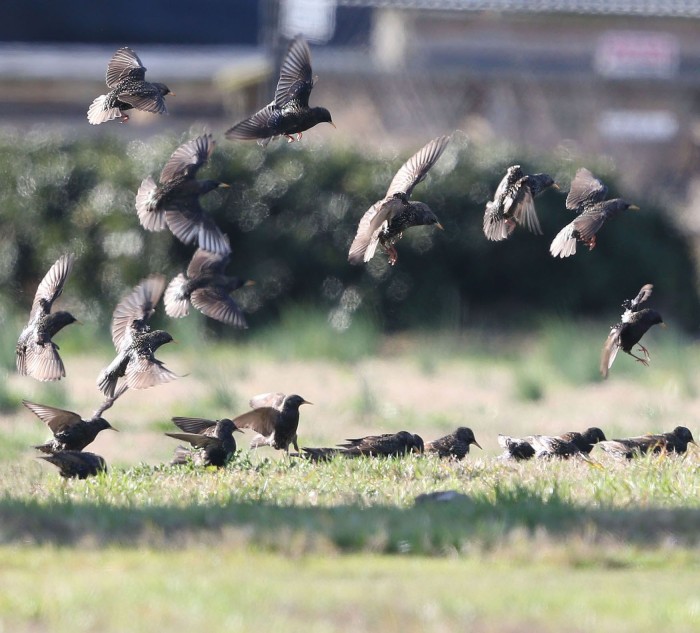
Quip, Question, Quote
I try to steer clear of charged issues here (with the exception of casting European Starlings in a favorable light). This is a bird blog, after all. But I need to touch on one. We just lost Charley Pride, the first African American to make it big in country music. The singer also played in the Negro Leagues, professional baseball leagues for African-American ballplayers. And he was a baritone.
He said the following in a 1992 interview with the Dallas Morning News. “They used to ask me how it feels to be the ‘first colored country singer,’ Then it was ‘first Negro country singer;’ then ‘first black country singer.’ Now I’m the ‘first African American country singer.’ That’s about the only thing that’s changed. This country is so race-conscious, so ate-up with colors and pigments. I call it ‘skin hangups’ — it’s a disease.” With those words and with that response, Mr. Pride hit one out of the park.
Thanks so much for reading. Please consider leaving a comment below. I respond to every one.
ALWAYS enjoy your photos and running commentary. It’s all very common sense and we should appreciate and respect one another. It would be a different world.
LikeLike
Always enjoy receiving comments like yours, Mary Ann. I agree. We should appreciate and respect wildlife, and we should appreciate and respect each other.
LikeLike
I’m actually a fan of European Starling (and House Sparrows and crows of any ilk). Species that can put up with Homo sapiens (and thrive!) deserve our admiration–and the flight coordination of a murmuration of starlings is a sight worth beholding!.
LikeLike
I agree. It’s funny. As I wrote, I was thinking about murmurations. There are few things in all of nature that are more eye-popping than seeing one. Would love to photograph one some day. Thanks for reading!
LikeLike
Love those foot closeups! And I agree with Mary Ann, we should all appreciate and respect one another, of course including the natural world.
LikeLike
Glad to hear, Carol. I love taking close-ups. I learn a lot myself by looking at them, and everyone finds them interesting. Can’t agree more about respecting others—and wildlife.
LikeLike
This was just what I needed as I am tired and mourning the loss of my wife.
LikeLike
My heart is heavy. I’m gratified the piece brought some solace. Take care and God bless.
LikeLike
I love your photos! And I especially love the last photo, and the commentary 😊
LikeLike
Thank you for your kind words. I love it that you especially enjoyed the pic of the starling flock. When they flock in the winter like this, they’re a lot of fun to try to capture. But it can be a challenge!
LikeLiked by 1 person
Yes, birds in motion is a challenge. But a fun one! You just never know what you might get, huh?! 😊
LikeLiked by 1 person
Thanks for another great blog, Dave — and I’m with you about appreciating European Starlings, and Canada Geese. I’m not quite there yet with House Sparrows, but I’m workin’ on it.
LikeLike
Glad you enjoyed it, Ray. Merry Christmas to you and yours!
LikeLike
I used to listen to my mum’s Charlie Pride records. His death is a great loss to his fans and to country music.
Wonderful photos, Dave. I especially like the Canada Goose shot.
Your water is so nice. I thought that in your last post too. It never detracts from the subject. I have terrible difficulties getting the water to look moderately decent as a background. I suspect it is because my shutter speed is too high because I’m trying to cut back on some of the sunlight. I also suspect I need to get out earlier when the light is not so harsh so I can reduce the shutter speed. I vow to experiment, but the getting up is always a challenge. Is achieving nice water backgrounds are common problem or is it just me?
LikeLike
Hi Tracey, I’ve never given much thought to shooting water or how it looks. FYI, I always use a long lens, and that may be the key (the compression effect as well as the narrower field of view)? Also, I’m always always @ 1/1000 sec. or higher (for action shots), so fast shutter speeds may help rather than hurt. I just haven’t given this a lot of thought. Yes, Charley Pride’s passing was a big loss.
LikeLiked by 1 person
Thanks for your feedback, Dave. I ought to take a note of what is happening in the environment when the problems are at their worst, eg. a lot of movement in the water combined with strong light. That is my other suspicion.
All the best to you.
LikeLiked by 1 person
Thanks so much for sharing!
LikeLike
You’re welcome. And thank you for reading and taking time to comment.
LikeLike